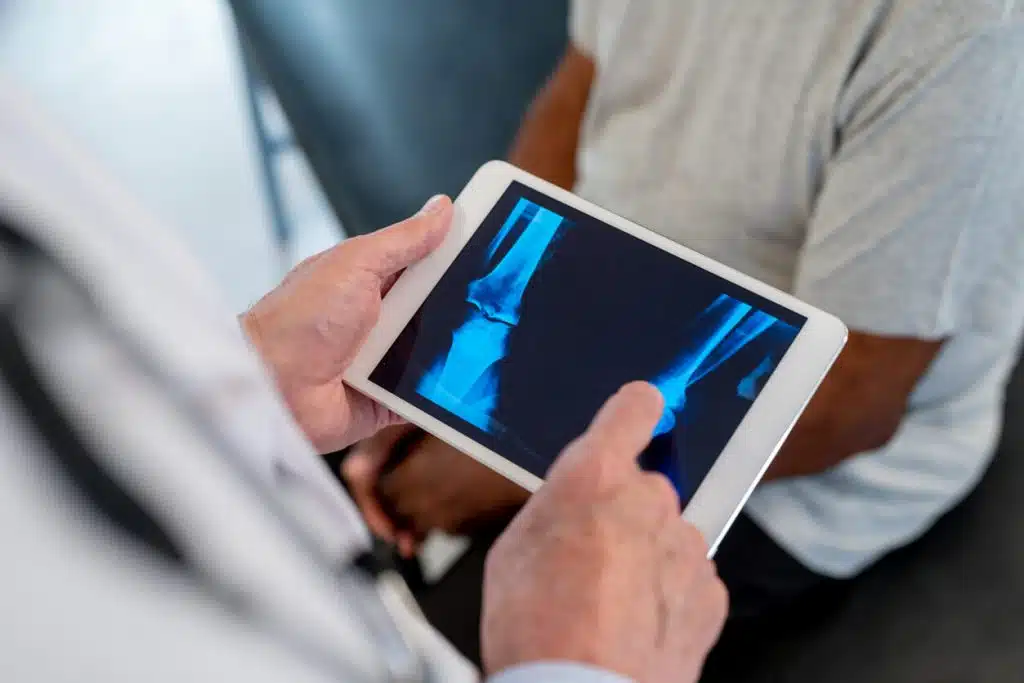
What are Fractures?
A fracture is a break in the continuity of a bone. Fractures can be caused by:
- Trauma
- Overuse
- Diseases that weaken the bones
Recognizing the signs of a fracture—pain, swelling, bruising, or deformity—is the first step towards seeking timely expert care.
Types of Fractures
There are many types of fractures, but here are some of the most common examples:
- Simple (Closed) Fracture: The bone breaks but does not puncture the skin.
- Compound (Open) Fracture: The bone breaks and pierces through the skin, increasing the risk of infection.
- Stress Fracture: A small bone crack often caused by overuse.
- Comminuted Fracture: The bone shatters into three or more pieces.
Each type of fracture requires a nuanced approach to treatment.
Fracture Treatment Explained
The treatment for fractures includes the following aspects:
Initial Assessment and Diagnosis
The journey to recovery begins with a thorough assessment, including medical history, physical examination, and diagnostic imaging such as X-rays or MRIs. This comprehensive approach ensures an accurate diagnosis, guiding the tailored treatment plan.
Non-Surgical vs. Surgical Management
- Immobilization: The cornerstone of fracture treatment, immobilization involves casts, splints, or braces to keep the broken bone in alignment, facilitating natural healing.
- Medication: Medications may be prescribed to manage pain and facilitate healing.
Conversely, surgical interventions may be necessary for more complex or improperly aligned fractures, employing techniques such as open reduction and internal fixation with hardware like pins, plates, or screws, which ensures proper alignment and stabilization during the healing process.
The Role of Rehabilitation
Rehabilitation plays a crucial role in the recovery journey.
Rehabilitation aims to restore strength, flexibility, and function through targeted exercises and therapies, guiding patients back to their pre-injury levels of activity.
The Role of Patient Participation
Healing is a collaborative effort. The following are pivotal aspects of ensuring a successful recovery:
- Adhering to the treatment plan
- Attending follow-up appointments
- Engaging in prescribed rehabilitation activities
The Importance of Professional Consultation
Navigating the treatment of fractures requires medical intervention and an understanding and compassionate partnership between the patient and the healthcare provider.
Like each patient, each fracture is unique, demanding personalized care tailored to individual needs and circumstances.
What works for one person may not work for another.
If you or someone you know experiences a fracture, do not wait to get medical help. Visit the nearest orthopedic surgeon in Baltimore to get the care you need.
Top-Notch Orthopedics in Baltimore, MD
As your healthcare providers, we are here to offer not just fracture treatment but also support, education, and guidance through every step of your recovery journey. Trust in our expertise, and together, let us pave the path toward healing and resilience. Remember, in the face of fractures, you are not alone. As the best orthopedic providers in Baltimore, we are committed to providing you with the expert care and attention you deserve, ensuring a return to strength and functionality.
Look no further than Orthopaedic Associates of Central Maryland if you need treatment for fractures. You may reach us at (410) 644-1880 or toll-free at (855) 4MD-BONE or use this link to schedule an appointment. For your convenience, we offer physical therapy in Baltimore to help you recover from a fracture.
We look forward to serving you!

